Art Home | ARTH Courses | ARTH 213 Assignments
Italian Painting of the 12th to Early 14th Centuries
A major change we will observe in the art of the 13th and early 14th centuries is the changing conception of the relationship between the human and divine worlds. Below is an overview and detail of Christ from the ceiling mosaic of Baptistry in Florence. The mosaic is attributed to Coppo di Marcovaldo. Imagine yourself in the space of the Baptistry and you are looking up at the mosaic. Try to articulate your feelings in looking at this mosaic. How do you feel in relationship to the Christ of Judgment?
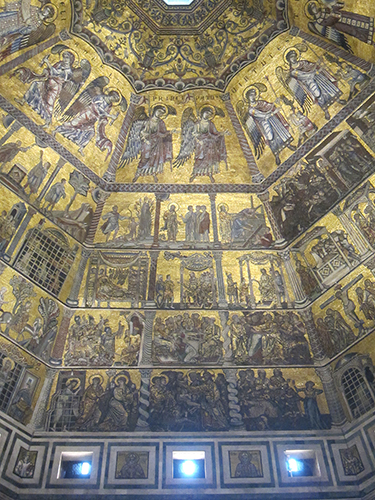 |
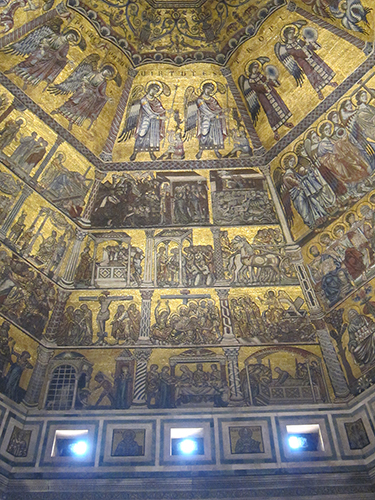 |
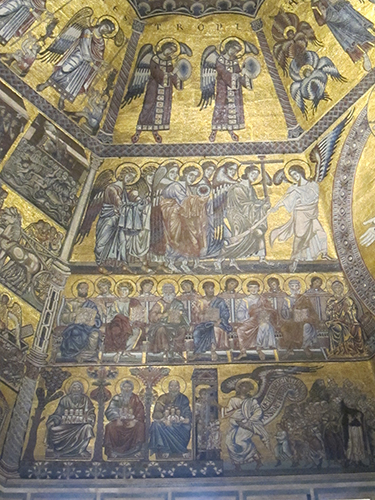 |
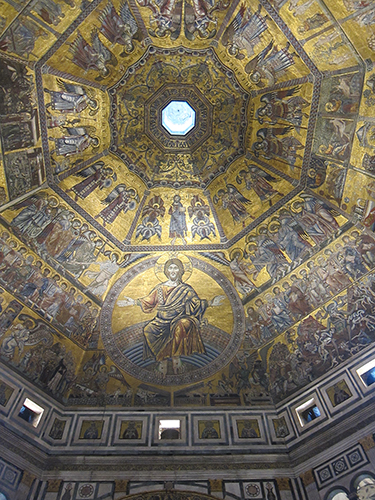 |
 |
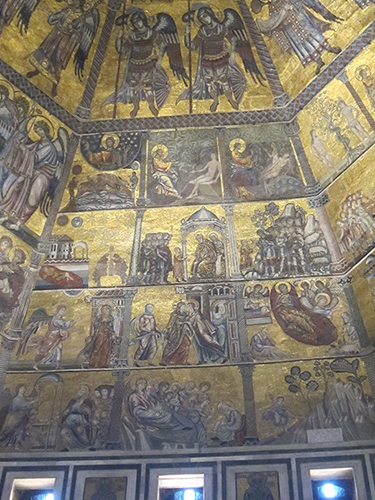 |
 |
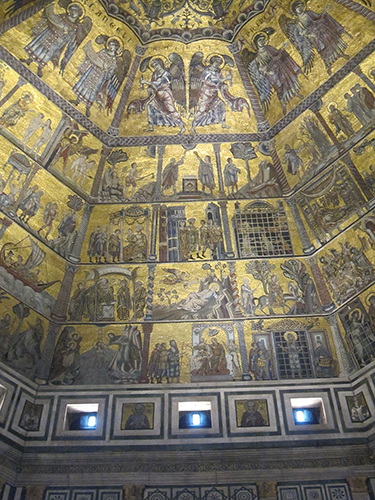 |
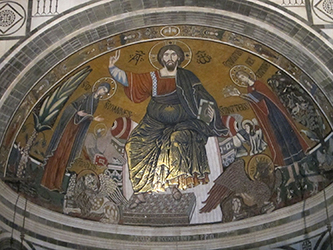 |
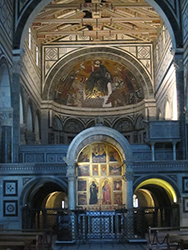 |
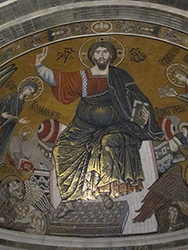 |
| The apse mosaic from the church of San Miniato al Monte is dated by an inscription to 1297. It is a good example of the Italo-Byzantine style. The Christ is fully in the Byzantine style (compare to Pantocrator from Céfalu). | ||
The history of Italian painting from the late 1100's to the early 1300's can be followed through a series of Crucifixes. These paintings were designed to be hung over altars and give visual form to the doctrine of Christ's Sacrifice on the Cross.
This type of Crucifix is depicted in the Miracle of the Crucifix from the Legend of St. Francis fresco cycle attributed to Giotto in the Upper Church of San Francesco in Assisi:
This symbolism directly connects to the central meaning of the Mass that would be celebrated at the altar beneath.
Examine these images and articulate what you see as the major similarities and differences evident in these works. Focus here on not only what you consider to be the major changes in the styles of the works and the conception of Christ, but also on the basic form of the Crucifixes.
| Florentine Crucifix, late 12th century. | Crucifix from Pisa, c. 1230. |
| Coppo di Marcovaldo, Crucifix, 2nd half of the thirteenth century. | Cimabue, Sta. Croce Crucifix, c. 1285 |
These images of the Crucifix can be paralleled by a comparable series of images of the Madonna and Child enthroned. These images likewise have significant doctrinal implications. In this case they illustrate the doctrine of the Incarnation. It is important in looking at the image of the Madonna to understand that she not only represents the historical mother of Christ, but that during the Middle Ages and Renaissance, the Madonna was understood to represent the Church. The Virgin holding the Christ Child symbolises the Church holding the body and blood of Christ in the form of the Eucharistic elements on the altar of the church.
| Coppo di Marcovaldo, Madonna and Child, c. 1265. | Cimabue, Sta. Trinita Madonna, c. 1280. |